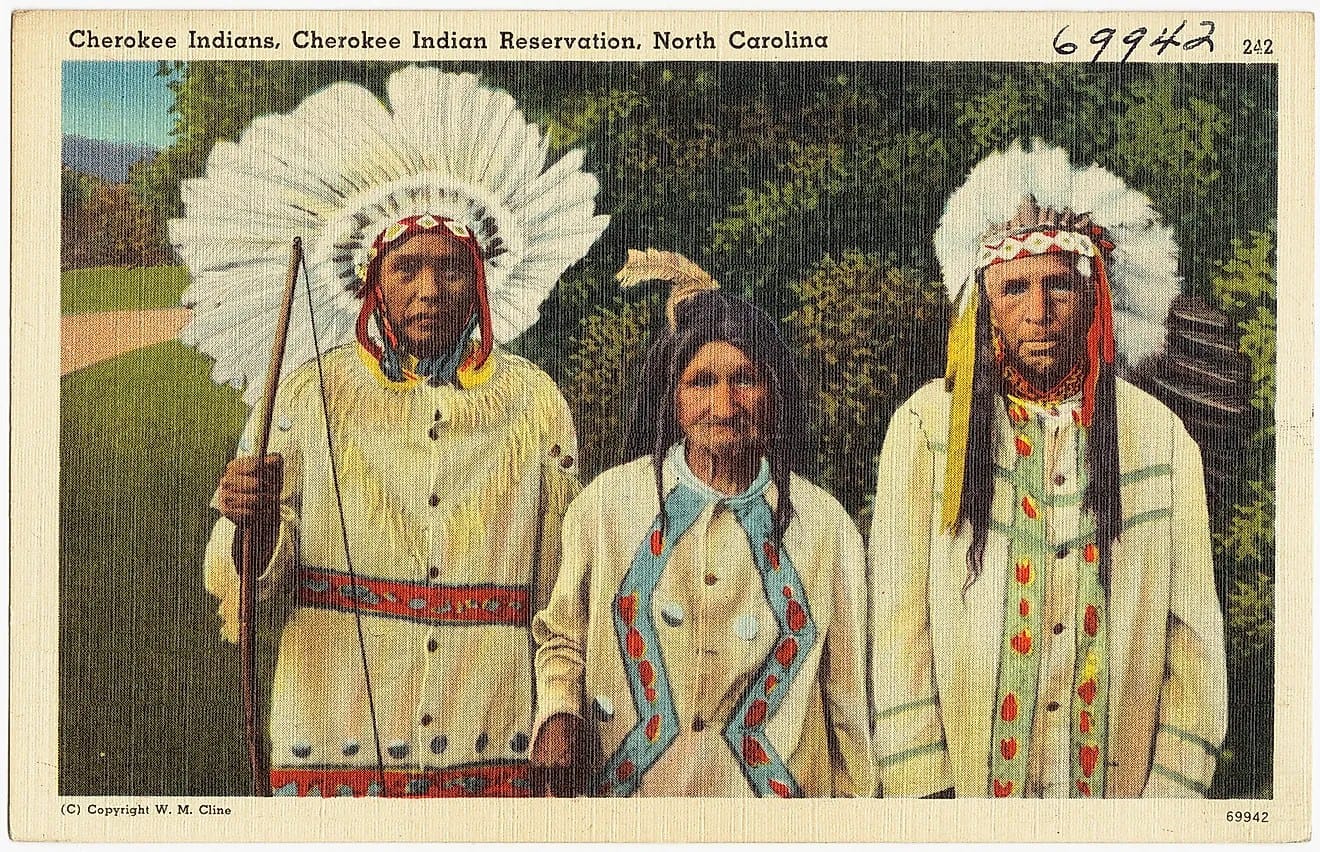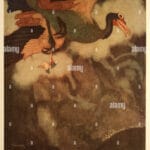Prepare to journey into the heart of Cherokee mythology as we uncover the recurring images woven through their captivating creation myth. These symbols, deeply ingrained in Cherokee culture, hold profound spiritual and cosmological significance. Join us as we delve into this ancient narrative, unraveling the meanings concealed within this recurring imagery.
The Enduring Symbol of Water in the Cherokee Creation Myth
The Cherokee, like many cultures, have a unique creation story. Ethnographer James Mooney (1861-1921), who documented these stories in his book Myths of the Cherokee (1900), observed a recurring image: water.
Why is water so important? For the Cherokee, water represents more than just a physical substance; it symbolizes the formless chaos before creation, the very source of life itself. Imagine a vast, dark ocean stretching endlessly—this is how the Cherokee creation myth portrays the primordial beginnings.
This watery abyss wasn’t merely a setting; it was the raw potential from which everything emerged. Water’s duality—its ability to both nurture and destroy—likely contributed to its significance as a symbol of constant change and the ebb and flow of life. The Cherokee even envisioned the earth floating upon a vast expanse of water, emphasizing its centrality to their understanding of the cosmos.
The Cherokee Creation Myth: More Than Just Water
Water isn’t alone in its significance. The Cherokee creation myth teems with vibrant animal imagery, each creature playing a unique and symbolic role. These animals are active participants in creation, shaping the world through their actions.
Take, for instance, the Great Buzzard. As he soared over the newly formed earth, his powerful wings carved valleys and piled earth into mountains. This imagery likely suggests the profound impact of natural forces and the importance of respecting the delicate balance of the natural world.
| Element | Symbolic Meaning |
|---|---|
| Water | Primordial chaos, life’s potential, transformative power |
| Great Buzzard | Creation of mountains, respect for nature |
| Animals | Active shapers of the world, imbued with symbolic meanings |
These recurring images provide a glimpse into the Cherokee worldview, offering a framework for understanding the world and humanity’s place within it. While our scientific understanding of the universe has advanced, the wisdom woven into these ancient narratives continues to resonate, reminding us of the power and mystery of creation.
Exploring the Depths of the Cherokee Creation Narrative
Let’s delve deeper into the captivating world of the Cherokee creation myth, where symbolic images paint a vibrant tapestry of their beliefs and worldview.
One of the most significant images is water. In the beginning, there was only water—a vast, swirling expanse representing chaos and the unknown. But water also symbolizes cleansing and new beginnings, a fresh start for a world yet to be formed. This duality reflects the Cherokee understanding of water as both powerful and essential for life.
Animals take center stage, not as passive creatures, but as active participants in shaping the world. Each animal embodies a different force of nature, a vital piece of the creation puzzle. This highlights the profound importance of animals in Cherokee culture, not just for sustenance, but for their spiritual significance as well.
The Sky Vault, a solid dome arching over the earth, represents the separation and connection between the physical and spiritual realms. It symbolizes the vastness of the universe, the mysteries that lie beyond human comprehension.
The four cardinal directions—north, south, east, and west—represent balance and order. They serve as a guiding compass, reminding the Cherokee of their place within the interconnected web of life.
Finally, the world tree, a towering symbol connecting earth and sky, embodies unity and interdependence. Its roots delve deep into the earth, while its branches reach towards the heavens, representing the interconnectedness of all living things.
It’s crucial to acknowledge that variations of these symbols and their interpretations likely exist within different Cherokee communities, passed down through generations of storytelling. Furthermore, our understanding of these stories constantly evolves as researchers uncover new insights. The Cherokee creation myth, therefore, remains a source of ongoing exploration and discovery.
The Water Beetle: A Small Creature with a Mighty Role
Within the Cherokee creation myth, the Water Beetle emerges as a crucial figure. But why is this seemingly insignificant creature given such prominence?
Picture the world as a swirling, watery void—chaos reigns. Then, the Water Beetle enters, paddling tirelessly through the primordial soup. This tiny creature’s movements, according to Cherokee belief, stirred the waters, causing mud and earth to rise from the depths, eventually forming the first islands and mountains.
The Water Beetle’s story is not just about a bug; it represents the incredible power of even the smallest creatures to enact significant change. It embodies the idea that from chaos, order and life can emerge.
Different interpretations exist regarding the Water Beetle’s symbolic significance. Some focus on its perseverance, its relentless dedication to churning the waters. Others see it as a testament to the interconnectedness of all things—the beetle’s actions directly impact the creation of land, which in turn, supports the emergence of plants and animals.
The Water Beetle’s adaptability—its ability to thrive in the watery chaos—likely resonated with the Cherokee, who recognized the importance of adapting to a constantly changing world.
| Feature | Significance |
|---|---|
| Water Beetle | Central figure in the creation myth |
| Watery Chaos | Represents the formless state of the world before creation |
| Movement/Churning | The beetle’s actions that lead to the formation of land |
| Land Formation | The emergence of order from chaos, signifying creation |
| Interconnectedness | Symbolizes the interconnected web of life and the impact of even small actions |
While we may never know with absolute certainty every nuance of the Water Beetle’s significance to the Cherokee people, by studying their stories, we gain valuable insights into their worldview and values. They teach us to recognize the power in even the smallest creatures and the potential for creation hidden within chaos.
The Significance of the Water Beetle in the Cherokee “Star” Myth
While not a literal “star,” the Water Beetle shines brightly within the Cherokee creation myth. Its presence embodies key themes of transformation, interconnectedness, and respect for nature.
Emerging from the primordial soup, the Water Beetle churns the waters, its actions leading to the formation of land. This process symbolizes the delicate balance between chaos and order, highlighting how life can emerge from the void.
The Water Beetle’s journey represents the interconnectedness of all living things. It underscores the Cherokee belief that every creature, large or small, plays a vital role in maintaining harmony within the world.
The Water Beetle’s significance extends beyond a simple creation story. It serves as a guiding principle, encouraging the Cherokee people to live in unity with nature, recognizing the profound impact of their actions on the delicate balance of the world.
| Key Idea | Description |
|---|---|
| The Water Beetle | Symbolizes transformation, the potential for life arising from chaos. |
| Creation from Chaos | Represents the delicate balance between disorder and order, how life can emerge from the void. |
| Interconnectedness | Embodies the idea that all living things, large and small, are connected and play a role in the world. |
| Respect for Nature | Encourages unity and harmony with the natural world, reflecting the Cherokee worldview. |
| Cherokee Wisdom | Highlights the profound understanding of the Cherokee people regarding nature and the interconnectedness of all things. |
It’s important to note that interpretations of this myth may vary within different Cherokee communities, as oral traditions often evolve over time and across regions. Nonetheless, the Water Beetle’s enduring presence in the Cherokee creation myth highlights its profound significance in their cultural memory and worldview.
Exploring Further:
Did you know that the Nazca Lines, those enigmatic geoglyphs etched into the Peruvian desert, span an astounding area and date back to an ancient epoch? Discover their captivating history and vast extent in our comprehensive guide to the cultura nazca extension y antiguedad.
- Crypto Quotes’ Red Flags: Avoid Costly Mistakes - June 30, 2025
- Unlock Inspirational Crypto Quotes: Future Predictions - June 30, 2025
- Famous Bitcoin Quotes: A Deep Dive into Crypto’s History - June 30, 2025
















